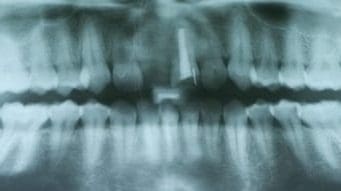
Dental X-Rays
X-rays, also known as radiographs, are used in many different types of medical offices. In medical offices, x-rays are most often used to diagnose tumors and bone injuries. Dental clinics use this technology to look specifically at patients’ teeth. X-Rays are an essential part of dental care to help with diagnostics and preventive care for your teeth. Many oral issues can be prevented and taken care of early on because of x-ray technology! Radiographs or x-Rays are of great value in a dental office.
Many times decay can be within the structure of a tooth and not evident visually on a routine clinical examination. They are usually completed during a comprehensive examination and used to diagnose specific dental problems.
Due to advances in technology, radiographs are considered safe when used under the direction of a licensed dental professional. When you call for your appointment let us know if you have had any x-rays recently. This will help us in determining exactly which dental x-rays we may need when you visit our office.
Types
There are two main types of dental X-rays:
- Intraoral X-rays…. these are placed within the patients mouth and are the most common type of X-ray. That’s because they allow dentists to find cavities, check the health of teeth roots, bone surrounding teeth and the status of developing teeth.
- Extraoral X-rays… these are taken outside of the mouth. This type focuses on the larger view of your jaw and skull.
Common Procedures:
- Bitewing: Indicate cavities in back teeth. It requires patients to gently bite down on small dental film packets or a reusable digital image receptor.
- Periapical: Focuses on teeth roots and the bone surrounding the teeth by capturing images of two to three teeth at a time.
- Panoramic: This machine rotates around the patient’s head to capture an image of all the teeth and jaw bones.
- Cone Beam CT: Uses 3D imaging that allows dentist to see the teeth, jaws and surrounding anatomy.
“With a Smile, We’re Changing Lives”
